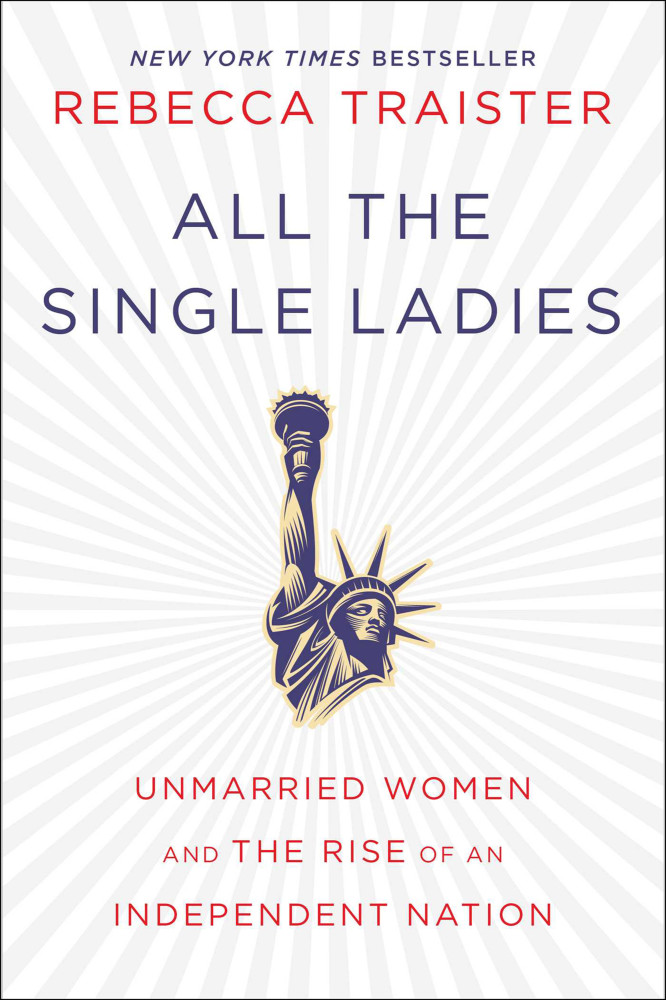By Marion Winik
Newsday
WWR Article Summary (tl;dr) Rebeca Traister’s new book, “All The Single Ladies” paints an upbeat portrait of empowered women and the unmarried life, concluding with a call for policy changes to support “the epoch of single women that’s upon us.” For her portrait of this “dramatic reversal,” Traister interviewed 100 women, and 30 of their stories are woven through the text in some detail.
Newsday
The stereotype of single women that has them elbowing each other out of the way to catch the bouquet at a wedding is fading. Today, you’re more likely to see that posse rocking the dance floor to the Beyonce anthem for which Rebecca Traister’s new book is named. Employing the tools of social history and narrative journalism, “All The Single Ladies” paints an upbeat portrait of the unmarried life, concluding with a call for policy changes to support “the epoch of single women that’s upon us.”
Traister traces the trend of happy singlehood back through American history to its pre-Colonial roots in England. In 1563, she reports, the House of Lords petitioned Queen Elizabeth I to marry ASAP. The queen refused, proclaiming, “I have long since made choice of a husband, the kingdom of England.” In private, she is said to have put it more bluntly: better “beggar-woman and single” than “queen and married.”
In the 16th century, a queen was the rare woman who could support herself without a husband. But as of 2010, Traister reports, the playing field had changed. American women now hold the majority of all jobs, including 51 percent of management positions; about a third of the nation’s doctors are female, and 45 percent of its lawyers. This economic situation supports the startling statistic at the basis of Traister’s book:
Only 20 percent of Americans are married by age 29, compared to nearly 60 percent in 1960.
For her portrait of this “dramatic reversal,” Traister interviewed 100 women, and 30 of their stories are woven through the text in some detail. As she humorously acknowledges, she drew heavily from her own pool of friends.
buy soft pack generic buy soft pack online no prescription
“It is fair to say that there are likely more college-educated feminists, writers, and New Yorkers here than most readers know in their real lives.”
Traister herself remained single until 35, she began writing this book weeks before her wedding, and weaves in many first-person observations and anecdotes, including her experiences of metropolitan living and female friendship, identified as pillars of a positive single life.
“In metropolises,” Traister explains, “women are more likely to find a deep and diverse pool of romantic and sexual prospects, and to encounter a combination of community and anonymity that unburdens them of centuries of behavioral expectations.” They come for the jobs, “then stay, for the fun,” as depicted by the libidinous cast of “Sex and the City,” which debuted in 1998. However, Traister reveals that during her first years in New York, she nursed a “seething grudge against ‘Sex and the City’ “, partly because she couldn’t afford the cable to watch it.
Television shows are also invoked to illuminate female friendship, which Traister sees as “the bedrock of women’s lives.”
More than the Carrie Bradshaw gang, Meredith and Cristina of “Grey’s Anatomy” strike her as role models: tough women who argued and competed with each other, shared beds and booze, who disliked hugging and cheap sentiment, and were obsessive about their work and their love lives, and who referred to each other lovingly and possessively as ‘my person.’ ”
That new, intense way of describing a best friend, “my person,” has since entered the lexicon, and is heard in Traister’s interviews. Evidence is also found on TV for the author’s thesis that “women’s primary, foundational, formative relationships are as likely to be with each other as with the men we’ve been told since childhood are supposed to be the people who complete us.” For the inseparable pair on “Broad City,” Abbi and Ilana, men play a distant second fiddle.
Traister mitigates her emphasis on people like her and her friends with a chapter focusing on sexism, racism and poverty.
Still, one category of single women is hardly represented at all, which I noticed because I am one of its members, divorced and widowed women over 50. One in three baby boomers is unmarried, according to a study at Bowling Green University, which means a huge number of people are approaching old age on their own. There’s only one older woman among the examples, and no mention of the issues relating to older singles in the appendix of recommended policy changes.
Though I found no breaking news in “All the Single Ladies,” it’s a well-written and unabashedly feminist analysis of the history and current situation of single women in America. When we all “put our hands up,” as Beyonce urges, it is clear we are a force to be reckoned with.














































































































































































































































































































































































